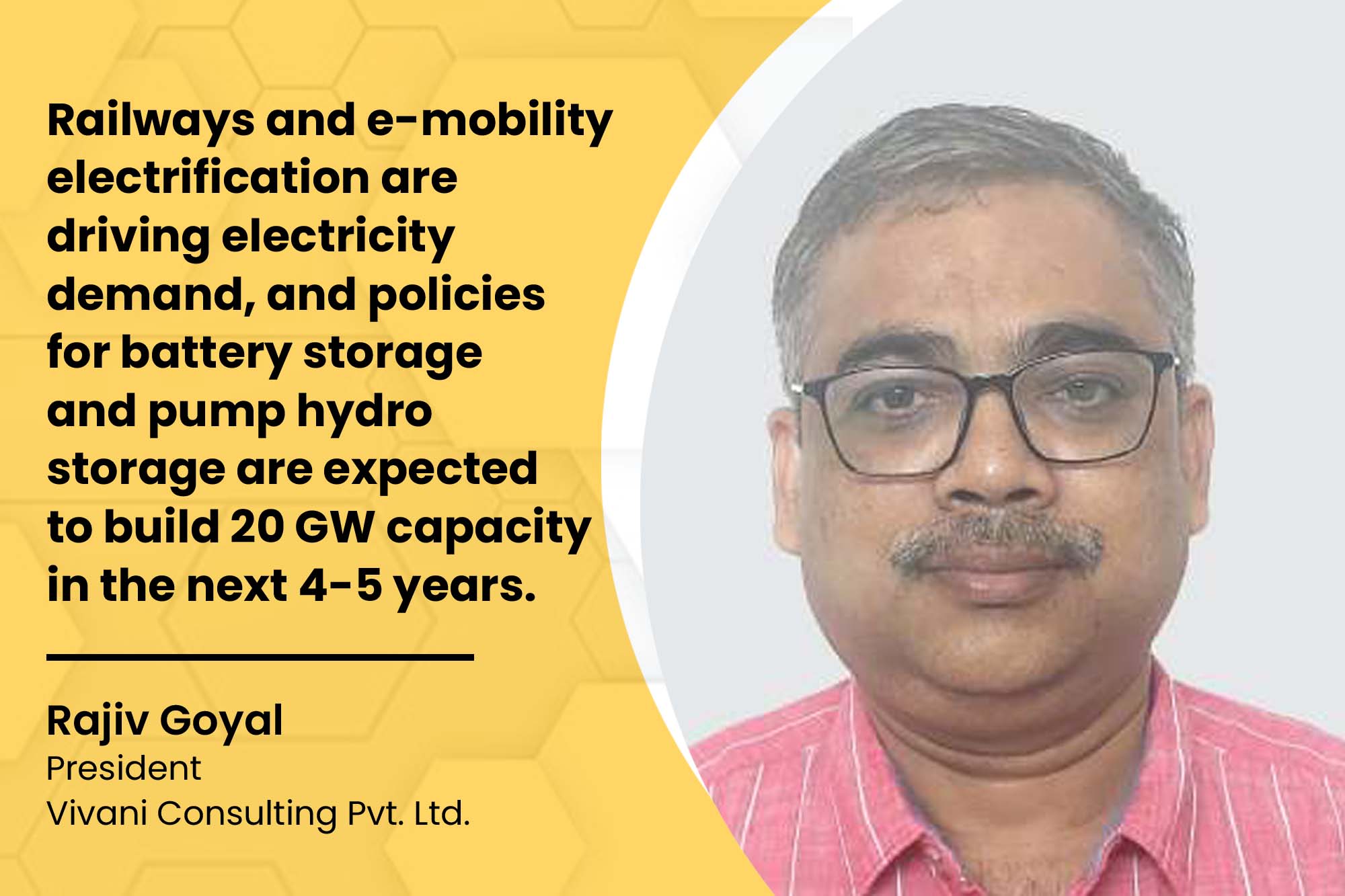Capital outlay of ₹3 lakh cr to add capacity to power networks in India by 2025
December 26, 2023 1:47 pm
December 26, 2023 1:47 pm

Railways and e-mobility electrification are driving electricity demand, and policies for battery storage and pump hydro storage are expected to build 20 GW capacity in the next 4-5 years.
In pursuing sustainable energy, government initiatives in the power sector and advancements like smart grids and digitisation are reshaping the landscape, fostering reliability, efficiency, and inclusivity. Rajiv Goyal shares his views on the industry with the EPR Magazine.
Which government initiatives contribute to the transformative shift towards sustainability in the power sector?
CEA has provided a long-term plan for capacity adequacy, and MoP is working on adding approximately 80 GW of thermal power by 2030 while achieving 500 GW in Renewable Power. RDSS, launched with a capital outlay of Rs 3 lakh cr, will add capacity to networks, digitising grids and smart metering in the country by 2025. Green Energy Open Access, waiver of transmission charges, and subsidised wheeling charges have accelerated energy transition plans. Electrification of railways and E-mobility are driving up electricity demand. Policy for Battery Storage and Pump hydro storage is expected to build 20 GW capacity in the next 4-5 years so that fluctuations in RE can be used constructively.
How are smart grids playing a role in enhancing the efficiency and reliability of the power sector?
Smart T&D grids have successfully transmitted power without any serious outage. The grid’s reliability is improved, and Tariff petitions reveal it at 99.9 percent and above. Monitoring RTDAS at 11kV feeders in various state Discoms relieved consumers with lower outages. Equipment is in place to isolate faulty sections of lines. Smart meters and data from meters using modems have helped make timely capacity additions and reduce transformer failures. Grid digitisation is still a long journey at state Discoms, with many more initiatives to be unveiled, including the usage of Digital Twin Technology and Data Lake Development for faster management decisions.
Can you elaborate on the public-private collaborations strengthening the infrastructure for widespread electrification?
The transmission sector in the central and state sectors is bullish on PPP projects where projects are regularly awarded on tariff-based competitive bidding (TBCB). In the mechanism, the risk of financing and RoW is shifted to the developer, but they also have the flexibility to cross hindrances.
Rajasthan Discoms has notified tender for 22 numbers of 33kV network along with 33/11kV substation on TBCB. State Discoms are replacing 250 Million Smart meters on a PPP basis.
In the next phase, the Distribution Transformer can be awarded under a single contract for a Circle or Zone, as most Discoms have a failure rate of DT of more than 5 percent, primarily due to overloading, multiple times of repairs and poor maintenance.
What energy storage methods combat intermittency, and how does digitalisation enhance power sector efficiency for conservation?
The focus is more on Battery storage and pump hydro storage projects. The different technologies for battery storage are being researched, and by 2030, some solutions can be mass-adopted by Discoms and customers. Technology interventions and improvements are still needed in battery storage for longevity and higher energy conversion at 30 per cent of today’s cost for mass rollout. RTDAS and SCADA have sourced data in control rooms to initiate actions. Smart metering on a prepaid basis will allow consumers to control energy usage as money deduction makes people more aware than one single monthly bill.
What steps are being taken in the power distribution system to ensure a cleaner, resilient, and inclusive power landscape?
Green energy open access and waiver of transmission charges by PGCIL have prompted many large customers to accelerate the Energy Transition journey in many states. The 5 MW RE project policy in net metering by Maharashtra, allowing institutes under net metering by Uttar Pradesh and Group / Virtual Net metering in Delhi, is making power distribution cleaner and reducing distribution technical losses. Distribution of LED and now BLDC fans is another way of making the grid cleaner.
Spokesperson: Rajiv Goyal- Vivani Consulting
We use cookies to personalize your experience. By continuing to visit this website you agree to our Terms & Conditions, Privacy Policy and Cookie Policy.